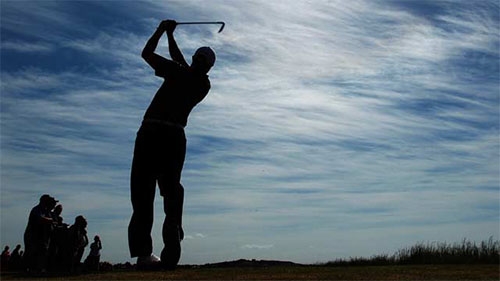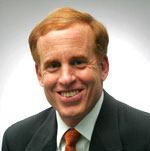(by James F. Peltz, LA Times)
The U.S. golf equipment market last year totaled $2.55 billion, a 3% drop from $2.62 billion three years earlier, according to the research firm Golf Datatech. Those figures mainly reflect sales at golf course pro shops and golf specialty stores, and they exclude sales at sporting goods stores and mass merchants such as Wal-Mart.
There are roughly 15,000 golf courses in the United States, and about 11,400 are open to the public. But getting more people to play on those courses, where a traditional round of 18 holes often can take four or five hours, is proving difficult.
Steve Mona is chief executive of the World Golf Foundation, which works to promote the sport’s growth. The Los Angeles Times asked Mona to explain the challenges facing the game and its equipment makers. Here’s an edited excerpt:
How many Americans play golf on a regular basis?
If you’re talking about a traditional green-grass golf course, it’s 24.1 million participants. That means they played at least one round on a regulation golf course.
How does that compare with a decade ago?
It’s relatively flat. It’s been right about 25 million for the last five years or so.
What’s a committed golfer?
These are people who say they plan to be part of golf in the next three to five years, and 90% of the spending in golf and 90% of the rounds played in golf are done by committed golfers.
But that figure isn’t growing, either, so how will the sport expand?
People are engaging in golf differently than on the traditional green-grass golf course. For instance, there is Topgolf, which is a form of entertainment but you’re striking a golf ball. There were 5 million people last year that participated at a TopGolf [facility]. Another way is on a driving range. There are about 15 million people who used a driving range last year and 4 million of them were non-golfers.
Most people get interested in the game first, trial is second and participation on an ongoing basis is third. We as an industry have to be smart and reactive to what’s going on in the world to ensure people progress from one stage to the other.
Are people more or less interested in taking up the game?
The interest in golf is at an all-time high. We had 37.4 million people last year say they’re either very or somewhat interested in playing golf right now. We view that as a positive. But the trick is getting people from interest to trial to participation.
We had 2.2 million people try golf for the first time last year, and that’s second-highest of all time. The all-time high was in 2000 — 2.4 million — and you’ll remember that as the height of the Tiger Woods era.
But that hasn’t obviously translated into the core participation numbers. Therein lies the challenge for us as an industry. Are we flexible enough to accommodate the changing lifestyles that are prevalent in our society? And is our product relevant to today’s consumers?
A set of golf clubs can cost several hundred dollars or more. Are golf prices — for equipment, greens fees and the like — holding back growth?
Golf is more affordable today. Golf has been moving at a pretty steady clip to become more of a public game than it ever has. Today, 76% of golf facilities are open to the public, and the median green fee is $37. If you want to find affordable golf in most markets, you can find it.
The $500 drivers and the $1,000 set of irons are really appealing to the very serious, very committed golfer who has the resources. That is not at all what the beginner is electing.
You don’t have to buy new equipment. The PGA of America has a trade-in program [for used clubs]. Most of the big manufacturers have a pre-owned program. If you’re the least bit savvy, you can get yourself outfitted pretty reasonably.
Until you know you’re committed to the game, I don’t advise you invest in high-end, brand-new equipment.
How is golf trying to promote growth?
For a lot of people who are traditional golfers, they’ve got it in their head that golf isn’t golf unless you pay 18 holes. Not everybody can do that. Some people just don’t have that luxury of time anymore.
We’re trying to respond to the short periods of time that people have to consume anything really, especially in their leisure time.
Here are some things that have been tried: Creating a one- or two-hour golf experience. Maybe it’s a little three-hole loop. It’s packaging up these bite-size pieces, if you will.
The U.S. Golf Assn. also has the Play9 initiative, and that’s encouraging golfers to take the nine holes as a legitimate golf experience.
Why is interest so high even without Tiger Woods being as prominent these days?
Despite the fact that he’s not at the top of his game and highly visible, there are a lot of compelling young players now who are creating tremendous interest, whether it be Jordan Spieth or Rickie Fowler or Jason Day or Rory McIlory, or on the women’s side, Lydia Ko or Lexi Thompson or Michelle Wie.
The PGA [or Professional Golfers Assn. of America] is on television now more than ever, and the same for the LPGA [or Ladies Professional Golf Assn.] tour. That has created more interest in the game too.




